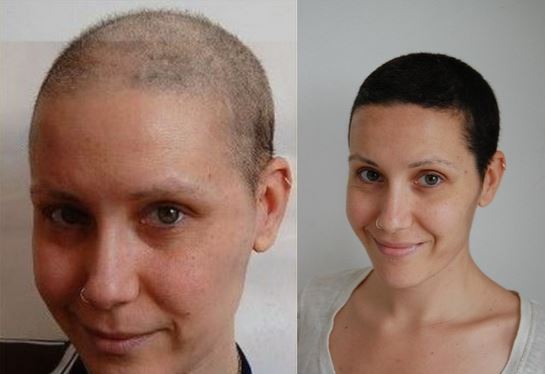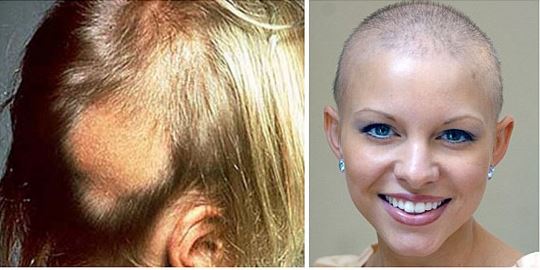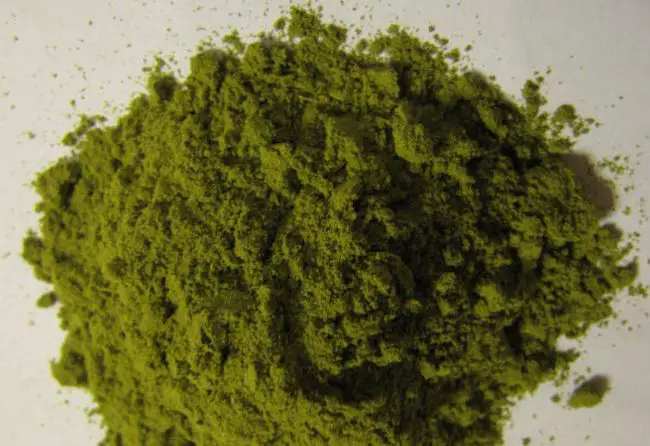Does Hair Dye Cause Cancer? Bladder Cancer and Safe Hair Dyes for Cancer Patients
Does hair dye cause cancer? Is bladder cancer caused by unsafe hair dyes and colors? What are the best safe hair dyes for cancer patients? Hair dye is known to cause allergies and such reactions on the skin. It has also been linked to cancer of the blood (leukemia) and of the bladder. Here’s all you need to know about it and non-carcinogenic hair dyes to use.
Cancer is a very serious health condition, affecting thousands of people worldwide and causing all sorts of negative symptoms. It even causes death in some cases, in case it progresses to a later more grown stage. Because cancer is such a serious and sensitive pathological condition, it’s best to consider all aspects that may potentially trigger its growth. This includes hair dye and cosmetic use as most people (men and women) see to use hair products and cosmetics on a daily basis.

Does hair dye cause cancer?
It is estimated that the majority of women worldwide, dye their hair at least once in their lifetimes (around 40% of the total female population). Although men do not dye their hair in the same frequency as women, around 20% of men worldwide have used hair dye, especially to cover their graying hair.
- The questions here is: Is it safe for a women’s health? Can hair dye cause cancer?
The answer according to several studies seems to be MAYBE YES, with a bit of precaution as most studies did find a link between hair dye use and cancer risk while a few others found contradictory results. According to most researches some cancer types and even hair dyes seem to have a stronger link, as we’ll discuss from the evidence below.
Hair dyes have been speculated to be carcinogenic because of the fact that they contain thousands of chemicals and chemical reactions that could potentially cause or increase the risk of developing cancer. Even though not every single ingredient in hair dyes has been found to be carcinogenic, a certain class of chemicals that act as artificial color pigments, covering the hair with color, have been found to be more carcinogenic than others.
Chemical structure helps answer the question on hair dye and cancer. Now, the chemical structure of each hair dye depends on whether it offers permanent, semi-permanent or temporary results. Permanent hair dyes have a higher concentration of chemicals and pigments in order to give more long-lasting results. However, due to this high concentration of chemicals, the hair dyes are more likely to cause cancer than other less permanent hair dyes, according to research.
Apart from the types of hair dyes based on the duration of results they offer, the duration/frequency of use and hair dye shade selection may also contribute to an increased risk in developing cancer.
Hair dye and leukemia cancer
Does hair dye cause leukemia or blood cancer? A few studies on whether hair dye may cause leukemia cancer have not shown any strong link (yet) between hair dye use and increased risk for leukemia cancer.
For instance, a study conducted in the U.S and Canada, with 765 leukemia patients and 623 healthy individual test subjects, has found a slightly elevated risk of leukemia cancer noticed in permanent and non-permanent hair dye users than those who didn’t use any hair dyes. Still, there has been only a minor difference and the researchers didn’t find any strong link between hair dye use and leukemia development that should raise concerns.
A study conducted in Italy also did not find any strong association between hair dye use and leukemia, although in its findings, there is a slightly increased risk noticed between black/dark brown hair dye users and development of leukemia.
Hair shades or pigments and risk for cancer
According Dr. John Corbett, a consultant to the Cosmetic, Toiletry and Fragrance Association and a few studies backing up his claims, the most important factor that contributes to an increased risk in cancer, is not only the duration of results of a hair dye (permanent, semi-permanent, temporary), but the shade of hair dye people use.
Dark brown and black hair dye and cancer
Does black hair dye cause cancer? For example, black and dark brown hair dyes have been found to contain more concentrated and strong chemicals than lighter shades and seem to be more strongly associated to the development of cancer.
Still, researchers that support this claim believe that this finding shouldn’t influence heavily the decision of people to choose a particular shade as they are still room for further and stronger research on the matter.
Hair dye and bladder cancer
Can hair dye cause cancer of the bladder? There have been a few studies that attempted to find (or not find) a link between hair dye and bladder cancer and results have also been conflicting—some studies did find a significant link while others did not find a strong association.
For example, a study conducted by Dr. Manuela Gago-Dominquez, professor Medicine at the University of Southern California, studying 897 bladder cancer patients and a similar number of healthy women, has found a significant link between hair dye use and bladder cancer.
Dr. Manuela supports that the frequency of hair dye use seems to play a role in the development of bladder cancer but again says no conclusions should be made about the use of hair dyes and bladder cancer.
Another study conducted by Kelsh MA, Alexander DD, Kalmes RM, and Buffler PA, has not shown any strong link between hair dye use and an increased risk in bladder cancer.
Safe hair dye or non-carcinogenic hair dye – What is the best hair dye for cancer patients?
Now, despite the lack of strong and unanimous evidence on the link between hair dye use and cancer, some people, especially those with a family history of bladder or similar types of cancers or cancer patients themselves may want to choose safer non-carcinogenic hair color alternatives.
Again, although no strong link has been found between cancer and hair dye use, it would be safe to refrain from using the following hair dyes, to minimize the risk of cancer progression:
- Permanent hair dyes
- Black/Dark brown chemical-based hair dyes
- Hair dyes that contain any or even all of these ingredients in their formulations: ammonia, peroxide (bleaching agent), PPDs (para-phenylenediamines, the chemical that creates color and is widely thought to be carcinogenic), lead, cool tar, toluene and resorcinol.
Some of the above ingredients have been banned in some countries, but depending on your area, it’s possible that brands still use the above ingredients in their hair dye formulas. Ammonia for example, is still use in most countries whereas some PPD’s in European Union, have been banned.
You may also avoid dyeing your hair with these types of hair dyes more than once a month, since frequency of using hair dye has been shown in some studies to play a part in increased risk of cancer development.
In general, if you don’t want to avoid coloring your hair altogether, you could opt for the use of natural and non-chemical based hair dyes. There are brands of hair color available that are based on natural ingredients and do not contain any chemicals that could potentially trigger the development of cancer, like the ones mentioned above. Here are some suggestions:
Pure Henna hair dyes
Henna is a 100% natural herbal pigment that could be used in place of dark hair dyes to achieve a black or dark brown shade. Henna hair dyes are usually available in powder form (to be mixed later with water) in most health food stores, organic stores, and online in big markets like Amazon, and eBay.

Pure Henna brands available in online and offline stores include:
| Lush’s henna line (UK brand), | Banjara’s black henna |
| Mehandi (Indian Hair Brand) | Nature’s essence Magic Henna Hair color |
| Nupur Henna | Herbal Time |
| Shahnaz Husain | Sonia hair dye |
| VLCC Ayurvedic Henna | Bigen hair dye |
| Khadi Natural Henna | Jovees Henna |
Some other brands that are based (almost) entirely on natural ingredients or contain no ammonia (ammonia free hair dyes) and other harsh chemicals found to be carcinogenic include:
- Leganza
- Herbatint
- Indus Valley
- Natulique Organic Colors
- Original and Mineral
- Logona
- Pour Karite
- Sante Herbal Hair Colors
- Tints of nature
- Naturigin
- Madison Reen
All the above natural hair brands may offer additional hair nourishing properties besides hair dyeing—Henna, for example, has been found to stimulate natural hair growth and volume. Therefore, that would be especially useful for cancer patients during the first stages of losing hair who want to boost hair growth safely and naturally.
Keep in mind that all of natural hair dye formulations are mostly indicated for darkening hair instead of lightening it more than a couple of shades. This is because natural hair dyes do not have the ability to penetrate and bleach the hair as much as their chemical counterparts. Chemical hair dyes and cancer are closely linked as we have seen above.
Thus, it’s not possible to lighten hair more than a couple of shades with a natural hair brand. Natural hair brands also do not cover white hair 100% but may slightly tint white hairs naturally so they blend better with the rest of the hair.
Additionally, since store and salon-available hair dyes in black or dark brown colors have been found by some studies to be more carcinogenic than lighter shades (due to high pigment concentration), it would be wiser to seek out darker colors in more natural hair dye brands—if you want to lighten your hair instead, no need to worry about using a chemical vs a natural hair dye as there is a decreased risk between chemical hair dye in lighter shades and cancer, due to low pigment concentration.